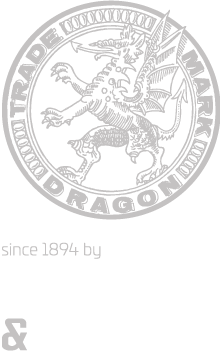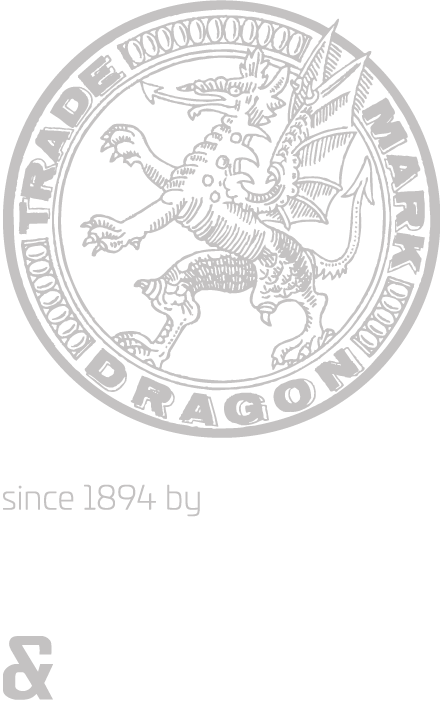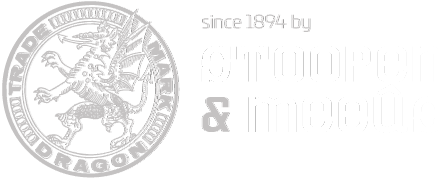PIGMENTS
The power of colour
A pigment is a coloured powder that colours a carrier such as concrete, plaster, plastic, paint, etc. The finer the pigment is distributed in the carrier, the stronger the colour effect.
Contrary to dyes, pigments are not dissolved but dispersed: the pigment continues to exist in the new material as small particles and does not dissolve. This also means that a pigment does not dissolve in water.
A pigment is only suitable for a particular carrier if it remains stable in this carrier. In other words, the pigment:
must not react with the carrier
must not oxidise under the influence of oxygen in the air
must not fade under the influence of sunlight (UV).
So this means that not all pigments can be used with all carriers. A suitable pigment type must be selected each time.
A wide variety of pigments exist which can be classified according to:
- origin: natural or synthetic pigments, or
- composition: inorganic (mineral) or organic pigments
Natural pigments may have organic origins, however, most natural pigments are extracted from soil as mineral (ochres, umbers, earth, etc.)
The majority of pigments are synthetic and based on mineral or organic substances. The most important mineral synthetic pigments are oxides of iron, chromium, cobalt, titanium, lead, molybdate, etc.
In addition, a wide range of organic compounds are also colour-bearing (phtalocyanines, azo pigments, etc.)
Different types of pigments
Description
The exclusive Dragon pigments are a comprehensive assortment of blended pigments or blends. These blends are composed of pigments and fillers, optionally with the addition of an additive.
Many of these blends are custom-made to meet the specific requirements of a customer with regard to colour effect, hue and use of the pigment. The most suitable pigment is created for each application.
Characteristics
The characteristics of these Dragon pigments are determined by the pigments used, their concentration, the use of fillers, and possibly additives.
Alkali and acid resistance, UV resistance and temperature resistance are the main parameters that need to be considered when using these pigments. Highly specialised applications should only be performed after testing a product extensively. Inorganic pigments are usually more resistant to UV than organic pigments and therefore more suitable for outdoor use.
For example, high-concentration blends are for cement and lime applications while low-concentration blends are more suitable for oil paint and fertilizers. An additional advantage of blends is that their specific gravity is higher than that of the pure pigment so they create less dust and they are easier to dose and mix.
Product range
Stoopen & Meeûs has an assortment of more than 200 Dragon pigments which are all produced for specific applications. The following categories exist depending on the composition:
- Dragon pigments based on a high concentration of organic green, blue, etc. and an additive are highly suitable for cement and lime applications, …
Colour chart > Exclusive DRAGON pigments: 9064, 12411, 13794, 15448, 16552, 16452, 13886, 15421, 15263, 9776, 10656, 15272, 16308, 16553 - Dragon pigments based on a high concentration of organic and inorganic pigments are highly suitable for cement and lime applications, etc…
Colour chart> Exclusive DRAGON pigments: 9062, 16551, 16411, 15053 - Dragon pigments based on white, black and blue are particularly suitable for cement, lime and paint applications, etc.
Colour chart > Exclusive DRAGON pigments: 16257, 12390, 15643, F6631, 13106, titaniumdioxide - Dragon pigments based on a high concentration of organic yellow, orange, red, blue and green, if alkali-resistant, are suitable for lime products and extremely suitable for paint, plastics, etc.
Colour chart> Exclusive DRAGON pigments: comparable colours to organic pigments for paint.
Use
The use of exclusive Dragon pigments depends entirely on the composition. For example, products have been developed for the following applications:
- Cement products such as industrial floors, concrete blocks, concrete paving stones, roof tiles, tiles, joint mortar, terrazzo, etc.
- Lime products such as mineral paint, fresco, wall plasters, ornaments, etc.
- Synthetics such as plastic, bitumen, asphalt, rubber, resins, quartz floors, etc.
- Paint such as oil and water paints, etc.
- Fertilizers
- Paper, cardboard, etc.
Description
The range of natural pigments consists of ochres, oxides, earth pigments (Sienna) and umbers. These natural pigments are formed by the weathering of different rocks in countries such as France, Italy, Spain, and Cyprus. The mined rocks are washed, dried and ground. The main component and colour-bearing component of natural pigments is iron oxide, together with various other oxides. Depending on their composition, they are referred to as ochres, oxides, earth pigments or umbers. When the earth pigments and umbers are calcined, their colour changes from yellow to reddish brown and these are referred to as burnt earth and burnt umbers. Natural pigments exist in all soft, natural hues, ranging from yellow, red and brown to black.
Characteristics
Natural pigments can be used indoors and outdoors for virtually all applications thanks to their excellent UV and weather stability. The alkali resistance and colour effect of these pigments make them extremely suitable for lime and cement products.
Natural oxides are acid resistant and can be combined with many chemicals. These natural oxides have a high coverage and they are widely used in paint products. The temperature resistance of natural oxides depends on the colour: yellow, black and brown are resistant up to 177°C while red has a much higher resistance and can be used in the ceramics industry. Natural oxides are good UV absorbers and can protect polymers in plastics and paint against degradation by UV radiation.
Product range
Stoopen & Meeûs have a range of natural colours in stock. Specific colours can be obtained by mixing individual colours (pre-mixed from 500 kg). The entire range of natural pigments is compatible with all the other pigments and natural pigments can also be mixed together. Natural pigments, together with synthetic iron oxides, offer the best price-quality ratio for many applications.
Colour chart > Natural oxides, ochres, earth pigments and umbers
Applications
- Cement products such as industrial floors, concrete blocks, concrete paving stones, roof tiles, tiles, joint mortar, terrazzo, etc.
- Lime products such as mineral paint, fresco, wall plasters, ornaments, etc.
- Synthetics such as plastic, bitumen, rubber, resins, quartz floors, etc.
- Paint such as oil and water paints, etc.
- Fertilizers
- Wood treatment products
- Paper, cardboard, etc.
Indicative colour chart
Exclusive Dragon pigments, natural pigments, synthetic iron oxides, chrome oxide green, cobalt oxide blue, ultramarine blue-violet, titanium dioxide, zinc white, lithopone, carbon black, ivory black, graphite, milori blue, various organic pigments.
 https://stoopen-meeus.showpad.com/share/ycAN65fzCnoCj8bNLphVo
https://stoopen-meeus.showpad.com/share/ycAN65fzCnoCj8bNLphVo
Technical Datasheets:
MSDS : https://stoopen-meeus.showpad.com/share/Ftr04srMygRGCLsDXaGcX
TDS : https://stoopen-meeus.showpad.com/share/gZoPayVLdbvxARmUdbIq2
Use of pigments by carrier
The following pigments can be used to colour industrial floors, concrete blocks, plant containers, cycle paths, paving stones, roof tiles, tiles, screed, joint mortar, cement glue, etc.:
- Natural oxides: yellow, red, brown, black
- Synthetic iron oxides: yellow, red, brown, black
- Dragon pigments: blue, green, grey
- Chrome oxide green
- Cobalt oxide blue
- Carbon or soot black (under certain conditions)
- Titanium dioxide white
To colour frescoes, plastering, decorative elements, mineral paints, etc., the following pigments can be used:
- Natural oxides: yellow, red, brown, black
- Synthetic iron oxides: yellow, red, brown, black
- Dragon pigments: red, yellow, blue, green, grey
- Chrome oxide green
- Cobalt oxide: green, blue
- Carbon or soot black (under certain conditions)
- Ultramarine: blue, violet (under certain conditions)
- Titanium dioxide white
The following pigments can be used to colour plastic, epoxy, polyester, alkyd, quartz floors, roof rubbers, etc.
- Natural oxides: yellow, red, brown, black
- Synthetic iron oxides: yellow, red, brown, black
- Dragon pigments: red, yellow, blue, green, grey
- Chrome oxide green
- Cobalt oxide: green, blue
- Milori or Prussian blue
- Yellow: PY 1, PY 3,…
- Red: PR 2, PR 3,…
- Green: PG 7, PG 8,…
- Blue: PB 15,…
- Ultramarine: blue, violet
- Titanium dioxide white
The following pigments can be used to colour liquid and powder fertilisers, seeds, etc.:
- Natural oxides: yellow, red, brown, black
- Bistre
- Synthetic iron oxides: yellow, red, brown, black
- Dragon pigments: red, yellow, blue, green, grey
The following pigments can be used to colour oil paint, water-based paint, mineral paint, synthetic paint, etc.
- Natural oxides: yellow, red, brown, black
- Synthetic iron oxides: yellow, red, brown, black
- Dragon pigments: red, yellow, blue, green, grey
- Chrome oxide green
- Cobalt oxide: green, blue
- Ultramarine: blue, violet
- Milori or Prussian blue
- Carbon or soot black
- Yellow: PY 1, PY 3,…
- Red: PR 2, PR 3,…
- Green: PG 7, PG 8,…
- Blue: PB 15,…
- Titanium dioxide white
- Zinc white




